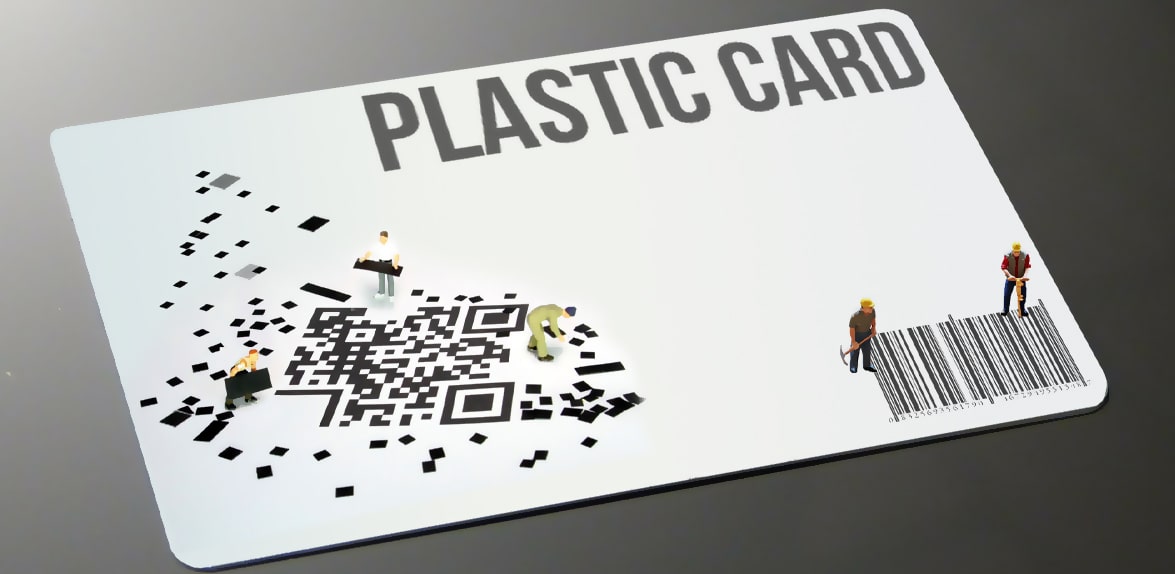Barcode Cards
Plast Print produces barcode cards that are ideal for loyalty cards, discount cards, gift cards, for businesses that have barcode scanners, which facilitates the integration of card products into automated processing systems. Barcode scanners are the most common option for automating the transfer of information to electronic form. Today, barcode scanning can be realized through smartphones cameras.
Barcode is one of the most common personalization methods.
Sequentially located black stripes on a white (most often) background contain encoded alphanumeric information. You can read it and process the data using a scanner.
To apply variable barcodes to a plastic card, a sublimation printing method, ink jet UV DOD personalization, lazy, toner technology, a permanent barcode is applied on an offset or digital machine.
Despite the fact that the most common background for applying a barcode is white, you can find backgrounds in gold, silver and even red. All other background shades significantly reduce the quality of reading the code information.
An ordinary linear barcode is read horizontally. Most often these are standards:
- Code39
- Code128
- Bar-code
- EAN -8
- EAN -13
- UPC (UPC-A, UPC-E)
- 2D 2D barcode PDF417
- QR-code
The smallest possible barcode size: width – 2.5 cm and height – 1 cm. The distance from the edge of the plastic card to the barcode must be at least 3 mm. Otherwise, there are no strict requirements for the location of the barcode on the surface of the card, but, of course, it must provide the ability to read other information freely.
The weak point of the barcode is the relative ease of counterfeiting. For this reason, the barcode rarely becomes the only type of card personalization, and is more often used in conjunction with other methods.
QR-code cards.
In Japan, from the late 90s, they began to develop and use QR codes. Since the early 2000s, this type of code began to spread throughout the world. The main advantage of this type of encoding is fast reading and higher capacity compared to UPC barcodes. Extensions include item identification, document management, product tracking, time tracking, general marketing.
The largest QR code (version 40) is 177 × 177 pixels, the smallest (version 1) has a size of 21 × 21 pixels (excluding fields).
Basic QR Code Encodings:
- Alphanumeric: Supports 10 digits, letters A through Z, and a few special characters. 11 bits for two characters, up to 4296 characters
- Digital: 10 bits per three digits, up to 7089 digits.
- Byte: data in any suitable encoding (default ISO 8859-1), up to 2953 bytes.
- Kanji: 13 bits per character, up to 1817 characters.
A QR code is detected by a sensor or camera as a two-dimensional image, unlike the old barcode, which is scanned with a thin beam. The dots are converted to binary numbers with a checksum check. Three squares at the corners of the image and smaller sync squares throughout the code normalize the image size and orientation, as well as the angle at which the sensor is positioned to the image surface.
Easy recognition by a scanning device is the main advantage of a QR code, which allows it to be used in production, trade, and logistics.
